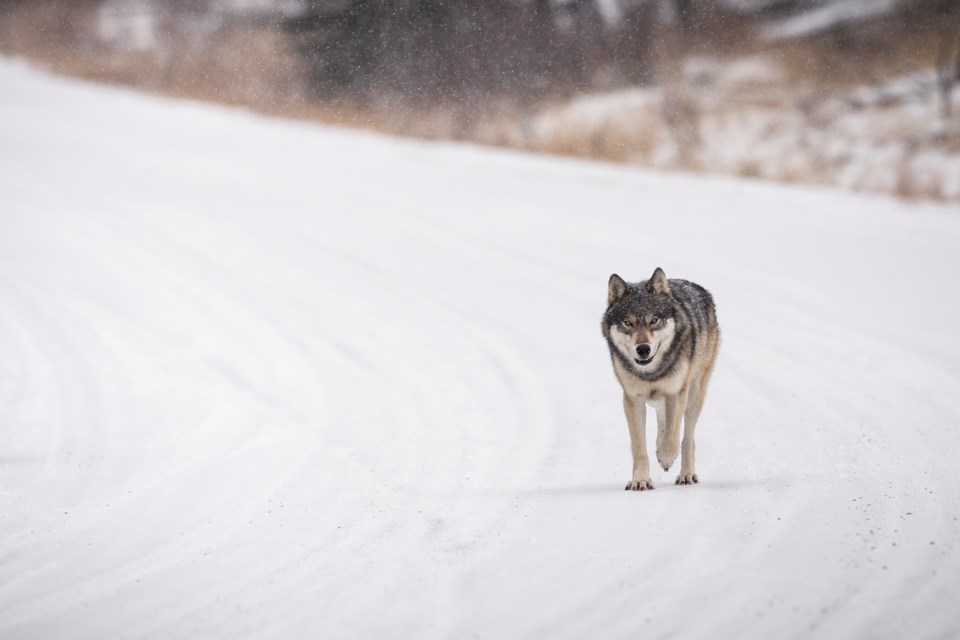WESTERN PRODUCER — A cattle producer in southeastern Saskatchewan says wolves have moved into his area and he wants hunters to be able to shoot them.
John Donaldson of Broadview told the Saskatchewan Stock Growers Association’s semi-annual meeting that farmers can shoot wolves on their own property but hunters cannot.
“I think licensed trappers can take them also in agricultural Saskatchewan, but the regular big game hunters cannot shoot them even if they find them on land where they have permission to hunt,” he said.
He seconded a resolution asking that, starting this fall, big game hunters be able to shoot wolves in all wildlife management zones where livestock are being attacked. He said there are active packs in zones 33, 34, 36 and 37 in his region.
“We’re 140 miles (225 kilometres) from the boreal forest and yet we have actually a breeding population of wolves,” he said.
The resolution suggested that wolves belong in the boreal forest and were either released by the provincial environment ministry or “moved in naturally because of the overpopulated and badly managed provincial deer herd.”
The ministry said it has not released wolves in any area of Saskatchewan and there is no evidence that wolves are moving substantially outside of their normal range.
“Saskatchewan wolf populations appear to be stable and typically fluctuate in response to food supplies,” said an email from the ministry. “Like most predators, wolves can cover large areas to find available prey and move into new areas as part of a natural dispersal process.”
Small groups or individual animals will leave packs and move through new areas to establish territories.
Most conflicts between wolves and humans occur in the boreal forest fringe where there is a hunting season. But the ministry said wolf hunting seasons have low success rates and little impact on local populations. Trapping can be more targeted and is more effective in dealing with problem wolves, the ministry said.
Any Saskatchewan resident can buy a fur licence and trap wolves during the fur season or ask a local trapper to help. The wildlife regulations allow landowners to kill wolves to protect their property, including livestock, without a licence.
Residents who are going to allow snares must follow the regulations. There have been recent reports in east-central Saskatchewan of farm dogs that have been either killed, required amputation or needed surgery after being caught.
In at least one case, the landowner was not notified about the snare, and the power snare was placed too close to the neighbouring property, which are both against the regulations.
According to the environment ministry, official complaints are infrequent. From April 2019 to Jan. 11, 2022, conservation officers opened 31 files about illegal or improper use of snares.
This number includes complaints, warnings and tickets. Of those, six people were ticketed and three received warnings.




